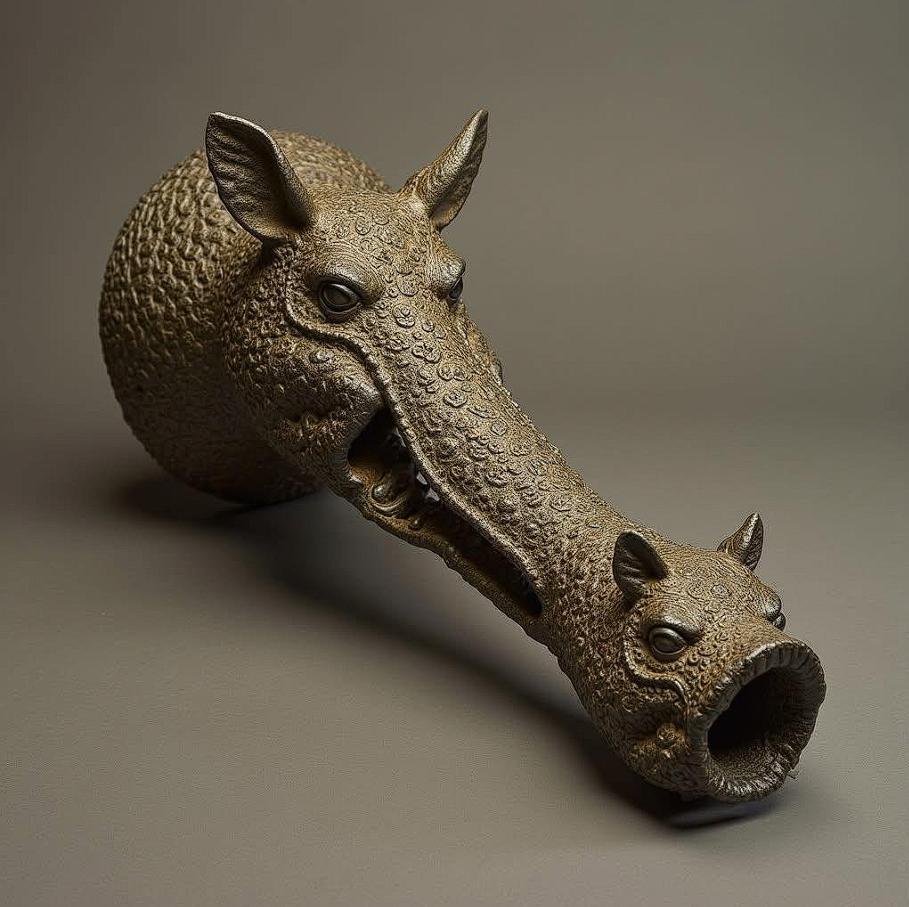“In the year 2004, at the archaeological site of Tintignac in France, the earth relinquished a remarkable relic of the ancient Celtic world—the carnyx. Dating from approximately 300 BCE to 200 CE, this war trumpet transcended its function as a mere musical instrument, embodying a powerful symbol of warfare and ritualistic practice.”
A Symbol of Power: The Boar-Headed Trumpet of War
- A Design of Terror: The Boar’s Head and Haunting Sound:
- Crafted from bronze and shaped with the formidable likeness of a boar’s head, the carnyx was a testament to the Celtic artistry of both functionality and intimidation.
- Its elongated vertical tube, designed to be held aloft above the heads of warriors, projected sound across the cacophony of battle, its deep, echoing tones intended to ignite the fervor of Celtic fighters and instill fear in their adversaries.
- A Significant Discovery: The Tintignac Hoard:
- The Tintignac excavation proved particularly significant, yielding over 500 artifacts, including multiple carnyces, representing one of the most substantial discoveries of these instruments to date.
- This abundance of artifacts provided invaluable insight into the cultural significance of the carnyx within Celtic society.
A Ritualistic Significance: Beyond the Battlefield’s Chaos
- Ceremonial Deposition: The Broken Trumpets of Tintignac:
- Intriguingly, many of the unearthed carnyces exhibited deliberate signs of breakage and bending, suggesting their use in ritual offerings rather than destruction in combat.
- This evidence points to a practice of ceremonial deposition, wherein these instruments, after their service in battle, were retired through ritualistic acts, underscoring the spiritual weight they carried within Celtic culture.
- A Voice of the Past: The Evocative Symbolism of the Carnyx:
- With its fierce aesthetic and haunting voice, the carnyx remains one of the most evocative symbols of Celtic warfare and religious practice.
- It serves as a tangible link to a world of ancient rituals and battlefield valor, a resonant echo of a civilization that sought to imbue its instruments with both power and spiritual significance.
Conclusion
“The Tintignac carnyx, unearthed from the soil of ancient Gaul, stands as a testament to the artistry and spiritual depth of the Celtic world. Its boar-headed form, its haunting voice, and its ritualistic deposition offer a glimpse into a civilization that sought to infuse its instruments with the power of both war and the sacred. It remains, therefore, not merely an artifact, but a resonant echo of a culture that sought to transcend the boundaries of the material world.”

CÁC TIN KHÁC
Mary Walton: The Forgotten Inventor Who Helped Clean Up America’s Cities
Tomb of Queen Nefertari in the Valley of the Queens, Egypt
Discover the Hypostyle Hall of the Temple of Hathor at Dendera
Venus de Losange: Unveiling the Mystery of a 20,000-Year-Old Paleolithic Icon